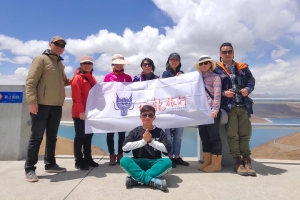Xinjiang is not only a treasure trove of natural wonders, but also an indispensable star in China’s culinary map. From the south of the Tianshan Mountains, through the Ili River Valley, to the Turpan Basin and the old town of Kashgar—every corner of this vast land offers unforgettable local flavors.
Today, let’s explore 10 classic dishes that locals enjoy every day and tourists fall in love with at first bite.
Big Plate Chicken
Originating from Shawan, this dish blends Han and Uyghur culinary styles. Chopped chicken is stewed with potatoes, chili peppers, onions, star anise, dried chilies, and soy sauce until tender and flavorful. The result: a rich, spicy but not overwhelming broth with juicy chicken pieces.
Halfway through, don’t forget to add hand-pulled “belt noodles”, which soak up the sauce beautifully—spicy, savory, and absolutely addictive.
Recommended in: Urumqi, Shawan Big Plate Chicken Street, Changji local restaurants
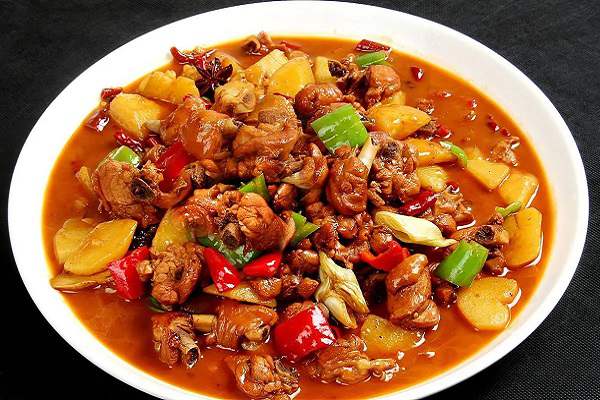
Big Plate Chicken
Grilled Lamb Skewers
These are the soul of Xinjiang street food. Made from locally raised lamb with the perfect fat-to-lean ratio, skewers are grilled over charcoal and seasoned with salt, cumin, and chili powder.
The exterior is crispy, the interior juicy, and there’s no gamy aftertaste—just pure, meaty goodness.
Pair it with an iced soda or traditional yogurt drink for the full experience.
Recommended in: Urumqi International Grand Bazaar night market, Korla street stalls
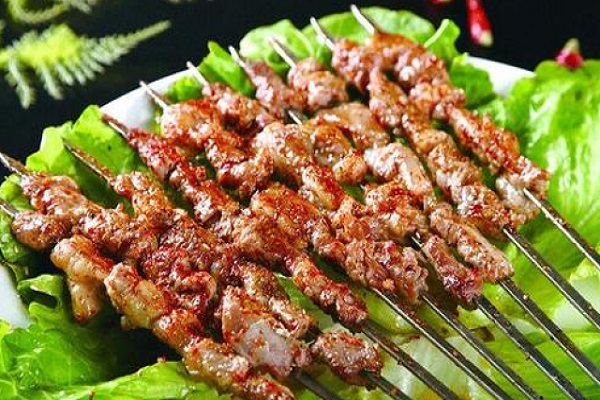
Grilled Lamb Skewers
Nang (Traditional Flatbread)
Often called the “rice of Xinjiang,” Nang is baked in clay ovens and features a crispy crust with a soft, chewy interior.
The most common types include sesame Nang and onion Nang, but you’ll also find beef-filled and sweet versions with raisins.
Usually served with milk tea or pilaf, it’s also perfect as a snack on the go.
Recommended in: Kashgar Old Town Nang bakeries, Turpan Nang Cultural Park
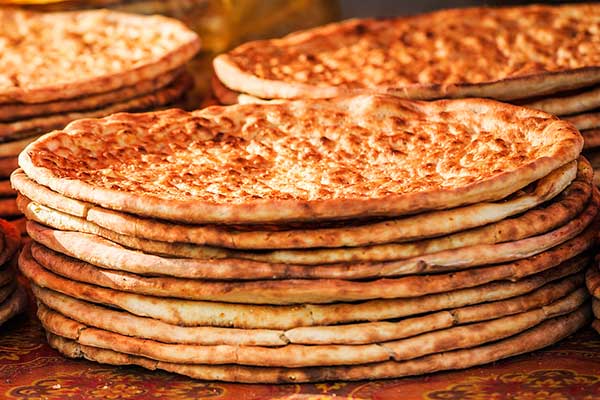
Nang (Traditional Flatbread)
Xinjiang Pilaf
A Central Asian–inspired rice dish, pilaf is made by stir-frying carrots and onions in lamb fat, then steaming them with chunks of lamb and rice.
The result is fragrant, moist, and flavorful. Locals traditionally eat it by hand—hence the name “zhua” (grab).
A few raw onion slices on the side will enhance the flavor even more.
Recommended in: Urumqi “Pilaf King” restaurant, Kashgar food markets
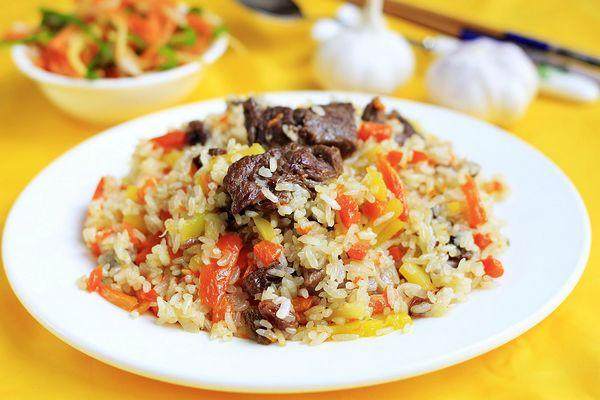
Xinjiang Pilaf
Baked Buns (Kao Baozi)
Unlike steamed buns, these are baked in a tandoor-style oven. The filling—usually minced lamb, onions, and cumin—is wrapped in a soft dough, sealed, and stuck to the oven wall to bake until golden.
Crispy on the outside and juicy on the inside, they’re a popular breakfast or afternoon snack.
Recommended in: Turpan night markets, Aksu, Hotan handmade bun shops
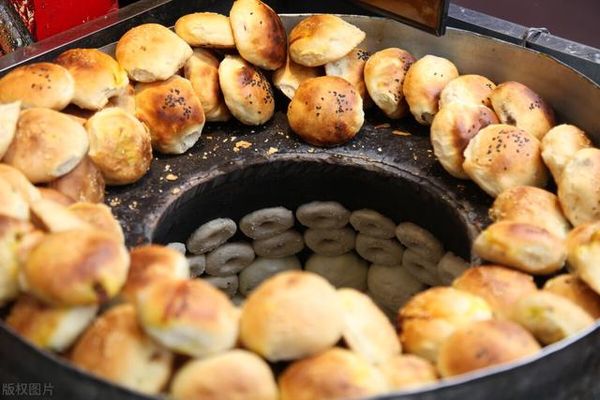
Baked Buns (Kao Baozi)
Hand-Grasped Lamb
Prepared using freshly slaughtered lamb, boiled simply with salt and served without heavy seasoning, this dish highlights the natural flavor of the meat.
Tear it apart with your hands (as tradition dictates) and dip it in chili-salt powder—it’s melt-in-the-mouth delicious.
Recommended in: Rural family kitchens in Kashgar, Altay pastoral areas
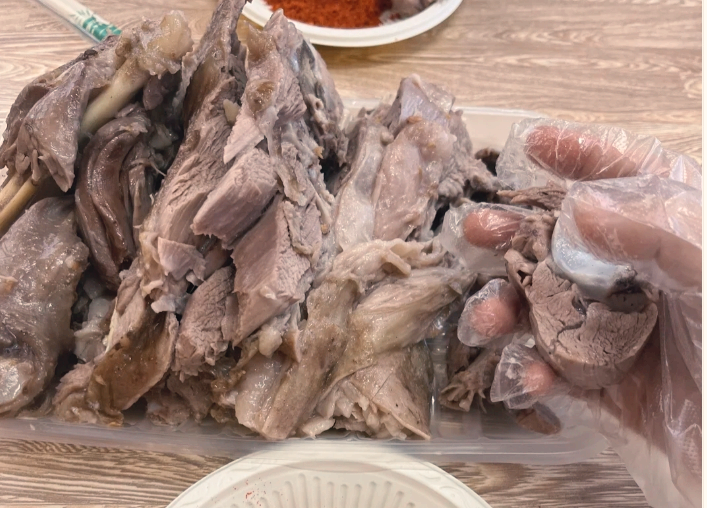
Hand-Grasped Lamb
Latiaozi (Stir-Fried Hand-Pulled Noodles)
A signature noodle dish in Xinjiang, it’s made with hand-pulled noodles stir-fried with lamb, tomatoes, onions, and peppers in a rich tomato-soy-based sauce.
The noodles are chewy, the sauce is flavorful—it’s a staple in local households.
Recommended in: Kuqa, Yining local diners, Urumqi fast food stalls
Thin-Skin Lamb Dumplings
Filled with spiced lamb and onions, these dumplings have paper-thin wrappers and juicy interiors. One bite releases a burst of hot, savory soup—be careful not to burn your tongue!
Often served with a light bone broth on the side.
Recommended in: Yili old-town snack shops, Kashgar breakfast stalls
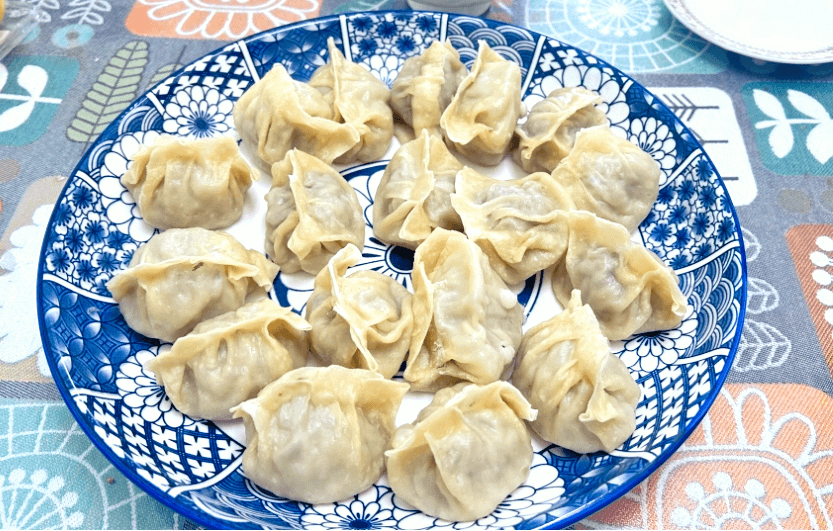
Thin-Skin Lamb Dumplings
Xinjiang Milk Tea
Different from sweet milk teas elsewhere in China, this traditional tea is brewed with brick tea and milk, resulting in a slightly salty, savory flavor.
Commonly served with Nang, fried dough twists (Samsa), or milk curds. It’s warming, satisfying, and a daily staple in the grasslands.
Recommended in: Kazakh family stays in Yili, Nalati grassland yurt camps
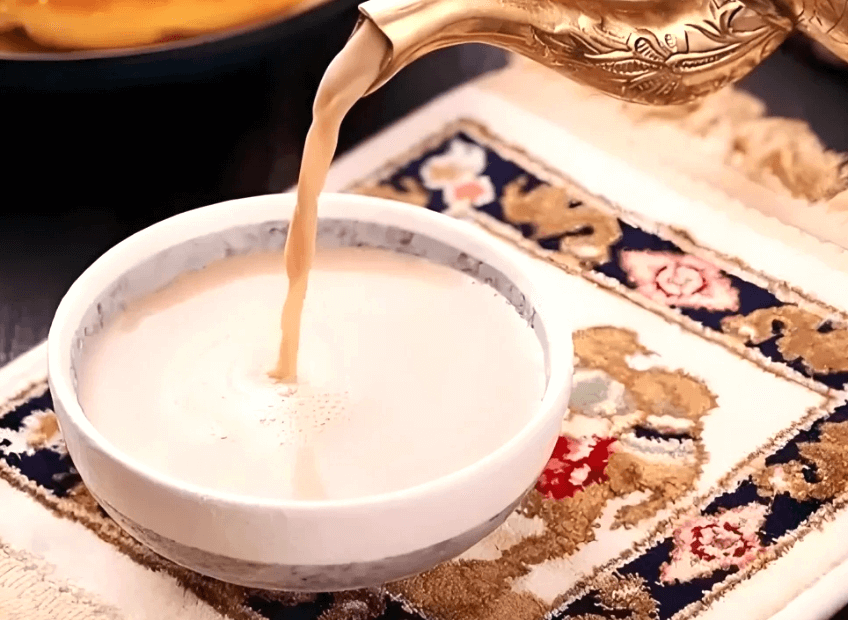
Xinjiang Milk Tea
Yogurt with Dried Apricots
Made from rich, homemade yogurt and topped with sweet dried apricots or raisins from Turpan, this is a refreshing and tangy treat perfect for summer.
It’s light yet satisfying, and great after a hearty lamb dish.
Recommended in: Turpan fruit markets, local yogurt shops in the bazaar

Yogurt with Dried Apricots
Xinjiang cuisine is a gift from nature and a product of centuries of multicultural exchange. No matter where you’re from, if you take the journey to the vast lands of Western China, rest assured—you’ll be welcomed with a feast.







